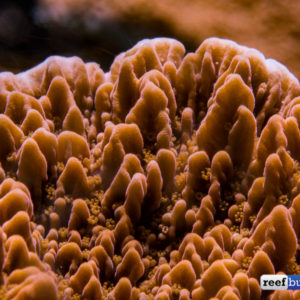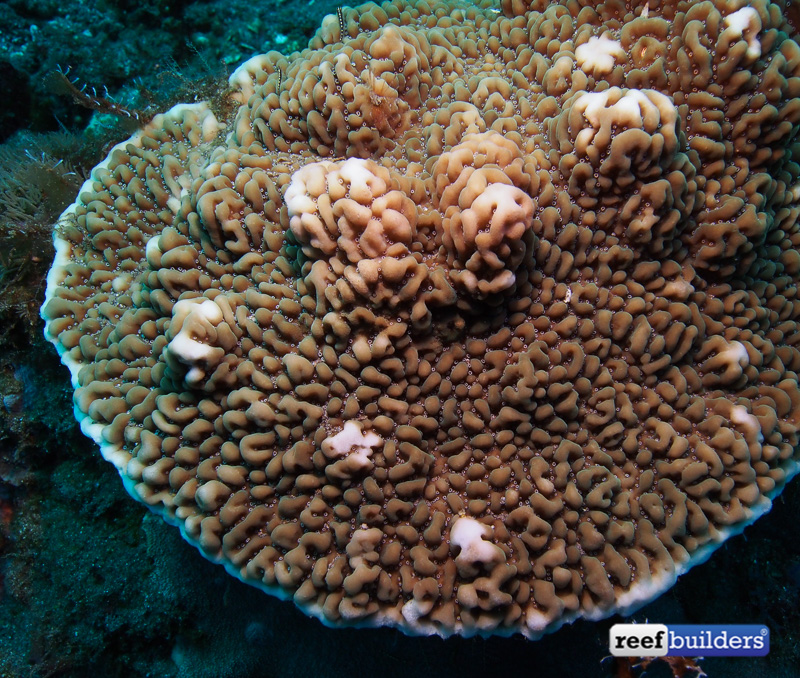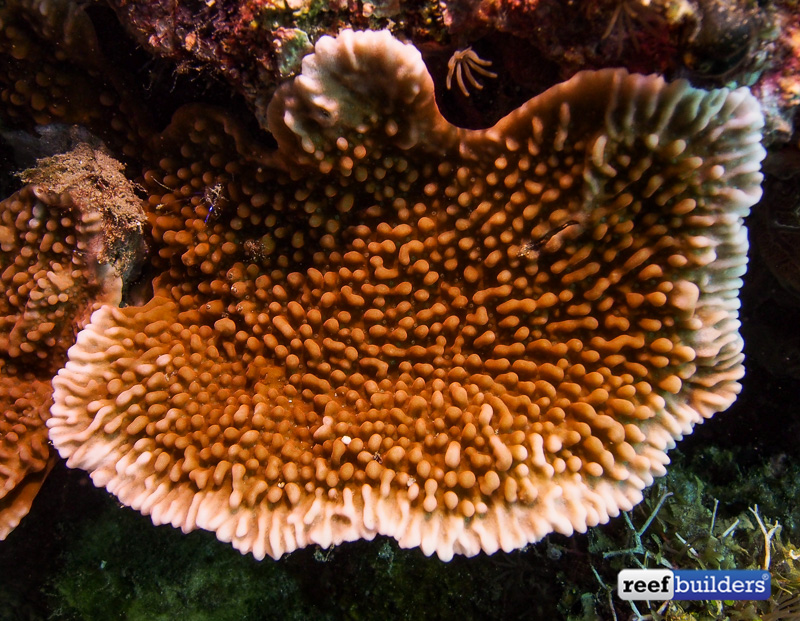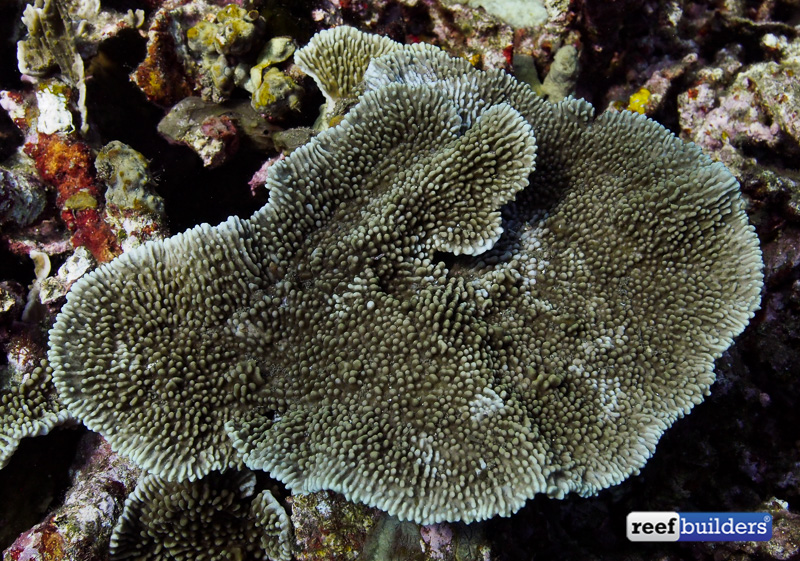Montipora is an amazing group of stony corals which is second only to Acropora in terms of species number and general abundance. Where Acros are differentiated based mostly on the branching shape and corallite structure, Montipora went a different direction instead opting to diversify its surface details and structure.

Last week we wrote about the incredibly colored Kung Pao Monti, a wild strain of Montipora palawanensis, which elevated this species to the same level of aquarium prominence as Montipora undata, M. danae and M. monasteriata. There is a continuous gradient of forms between all of these nodulous species and it’s hard to define where one species ends and another begins.
But today we want to introduce you to another species we’re beginning to see more often in the aquarium hobby, Montipora verruculosus. Not to be confused with another similar looking species, Montipora verrucosa, both species develop a surface covered by nodules, but M. verrucosa has very crowded nodes and a submassive growth form which can develop into thick branches while M. verruculosus has uncrowded nodes which align into ridges at the growth margins, while .

It is this ridged pattern at the margins which can confound the appearance of Montipora verruculosus with M. palawanensis. And frankly, since nodule formation tends to increase with high light, it might be hard impossible to tell the difference from a shallow water M. verruculosus from a shade-grown M. palawananensis.

The challenge of stony coral identification in the aquarium hobby is made that much harder by having access to mostly frags, and much less exposure to well developed mature colonies. It is not our intent for readers to come away from this article being a master of perfectly identifying several of the closely related species of Montipora.
Instead, we wish for you to recognize that there is real tangible species diversity among the bumpy-surfaced Montipora that are being trade-named by everyone and their uncle. If you even slightly begin to recognize the characteristics of the different species, you’ll hopefully develop a deeper appreciation the for diversity in this group of Montipora corals.





